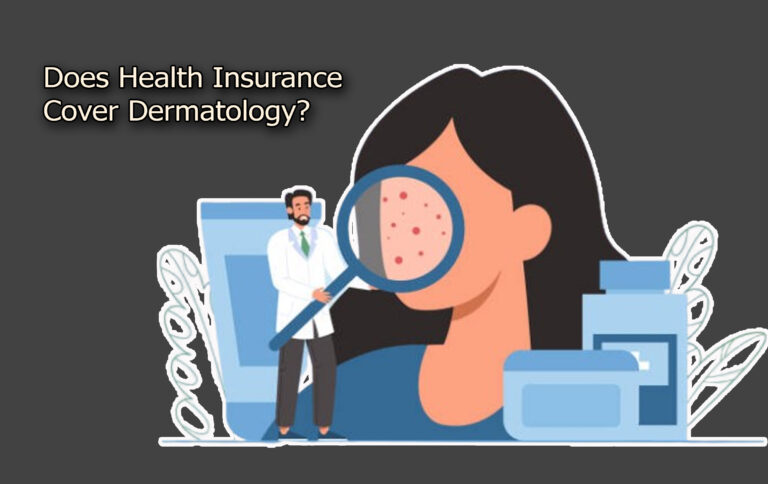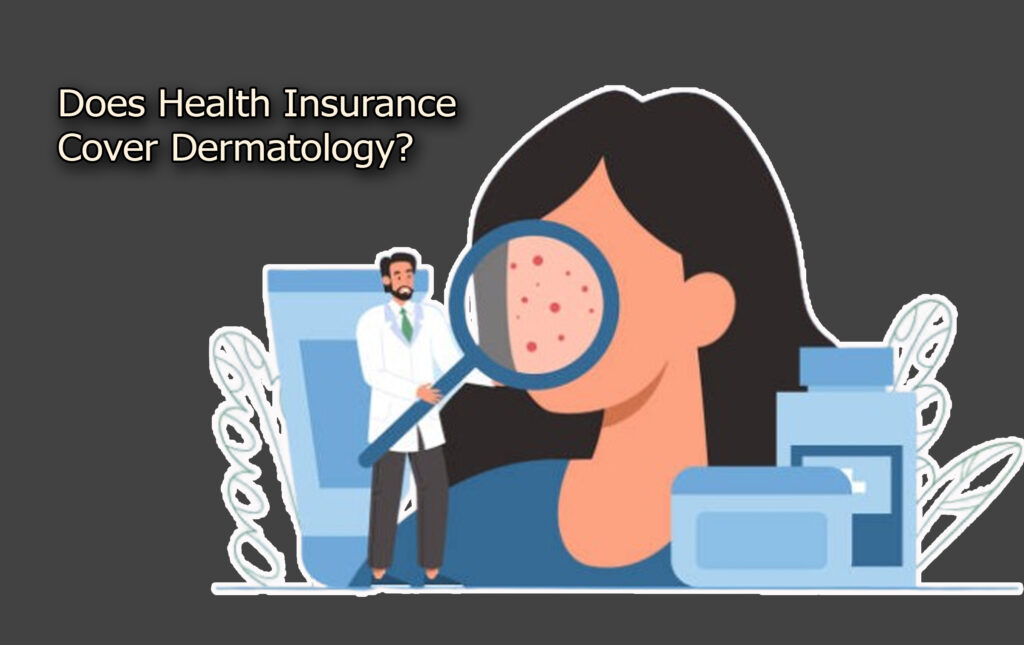
Does health insurance cover dermatology? The skin is the largest organ on our body, and its health plays a vital role in our overall well-being.

From acne and rashes to skin cancer and chronic conditions like psoriasis or eczema, dermatological issues can range from cosmetic concerns to serious medical conditions.
However, when it comes to accessing treatment, many people are still unsure as to whether their health insurance will cover dermatology services.
Furthermore, the health insurance coverage for dermatology largely depends on the type of service you need. Medically necessary procedures such as treating skin infections, suspicious moles, or chronic skin disorders are often covered by insurance.
On the other hand, elective or cosmetic procedures like wrinkle treatments, chemical peels for beauty purposes, or tattoo removal are usually not covered.
The Role of Dermatology in Healthcare
Dermatology is a branch of medicine that deals with conditions surrounding skin, hair, and nails. While many people stereotypically associate dermatologists with only cosmetic procedures or acne treatments, they actually diagnose and treat over 3,000 different conditions.
Furthermore, dermatologists can address skin cancer, eczema, rosacea, fungal infections, and autoimmune skin diseases. What’s more, many of these conditions are classified as medically necessary and thus eligible for health insurance coverage.
However, not every dermatology visit is considered important in the eyes of insurance providers. Many insurance companies separate dermatological services into two categories: medical and cosmetic.
Medical dermatology focuses on diagnosing and treating diseases, while cosmetic dermatology deals with enhancing appearance or reversing signs of aging.
This classification is important because insurance coverage is usually restricted to treatments that are deemed medically necessary.
When Health Insurance Covers Dermatology
Health insurance generally provides coverage for dermatological care that is necessary to treat or diagnose a medical condition. These services are deemed essential for maintaining health, managing chronic diseases, or preventing further complications.
Here are some of the common dermatology services that’s usually covered by insurance:
- Skin cancer screenings and biopsies
- Treatment for acne (if it’s severe or causes scarring)
- Diagnosis and treatment of psoriasis, eczema, or rosacea
- Removal of suspicious moles or skin lesions
- Treatment of skin infections, rashes, or allergic reactions
- Management of autoimmune skin disorders
To ensure coverage, these services must be medically documented by your dermatologist. Sometimes, your primary care provider may need to provide a referral.
What Dermatological Procedures Are Not Covered?
Health insurance does not usually cover dermatology services that are classified as elective or cosmetic. These procedures are considered non-essential because they do not treat a medical condition or improve overall health.
While they may impact a person’s confidence or appearance, they are not viewed as medically necessary by insurers.
Here are some of the common cosmetic dermatology procedures not covered by insurance:
- Botox or dermal fillers for wrinkles
- Cosmetic mole or skin tag removal
- Laser hair removal or tattoo removal
- Chemical peels for aesthetic purposes
- Microdermabrasion or skin resurfacing
- Treatment for hyperpigmentation or age spots
Despite these conditions, there are still grey areas. For instance, if a mole is removed for both cosmetic and diagnostic reasons, the procedure might still be partially covered.
This is why you must always consult your dermatologist and insurance provider to verify what is included and what might require an out-of-pocket payment.
How to Know If Your Dermatology Visit Will Be Covered
Communicating with both your dermatologist and insurance provider is essential to avoid unexpected expenses. Here are some of the steps you’ll have to take to verify coverage:
- Get a referral if required. Some plans, especially HMOs, require a referral from your primary doctor before seeing a specialist.
- Ask your dermatologist if your condition qualifies as medically necessary and if it will be coded appropriately for insurance billing.
- Check your plan’s provider network. You can visit a dermatologist who is in-network to maximize coverage and minimize out-of-pocket costs.
- You must carefully review your insurance policy. Look into the fine print about what types of dermatological treatments are covered.
- Ask about prior authorization as some procedures might require insurance pre-approval before they can be performed.
In addition, being proactive helps ensure that you get the care you need without incurring avoidable costs.